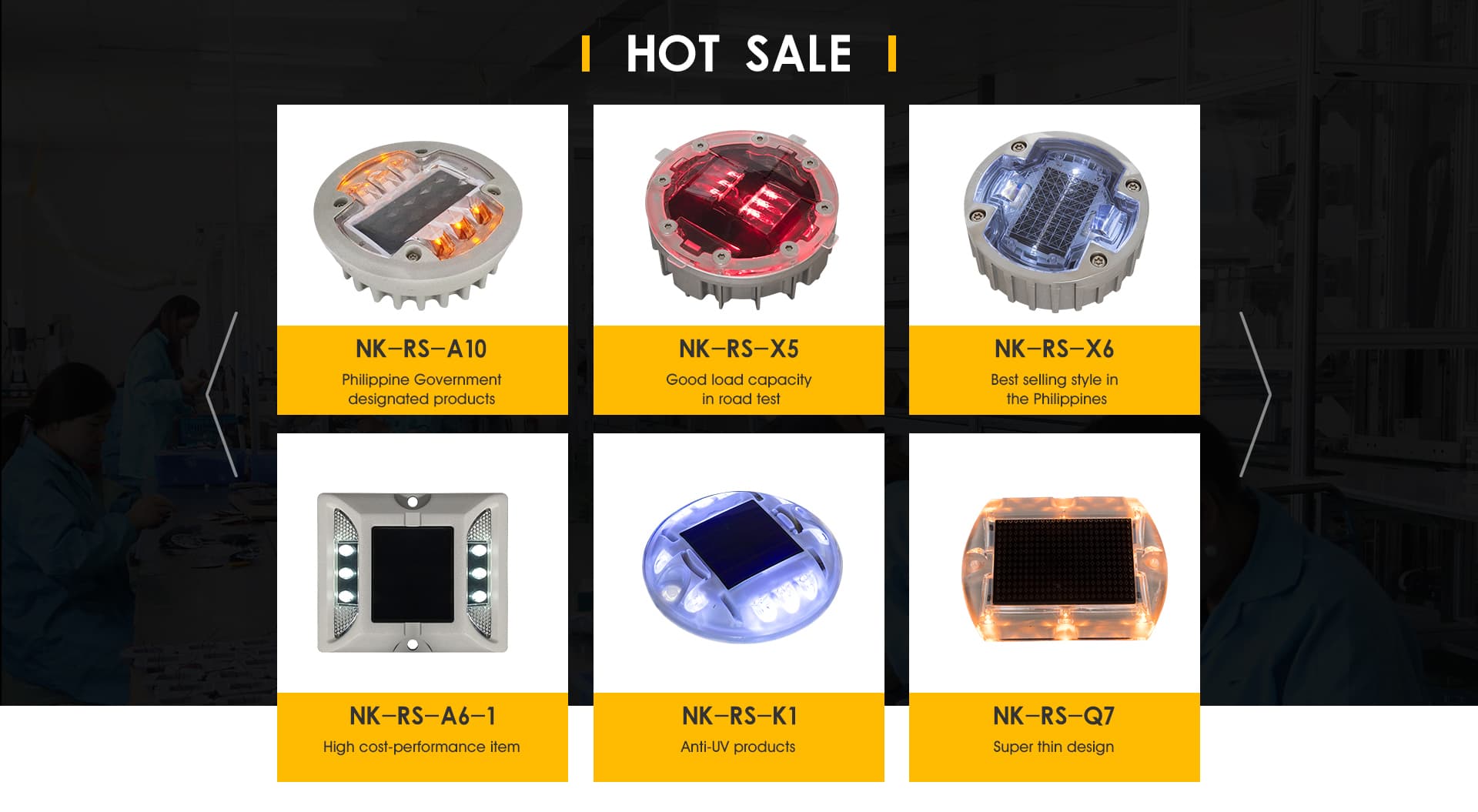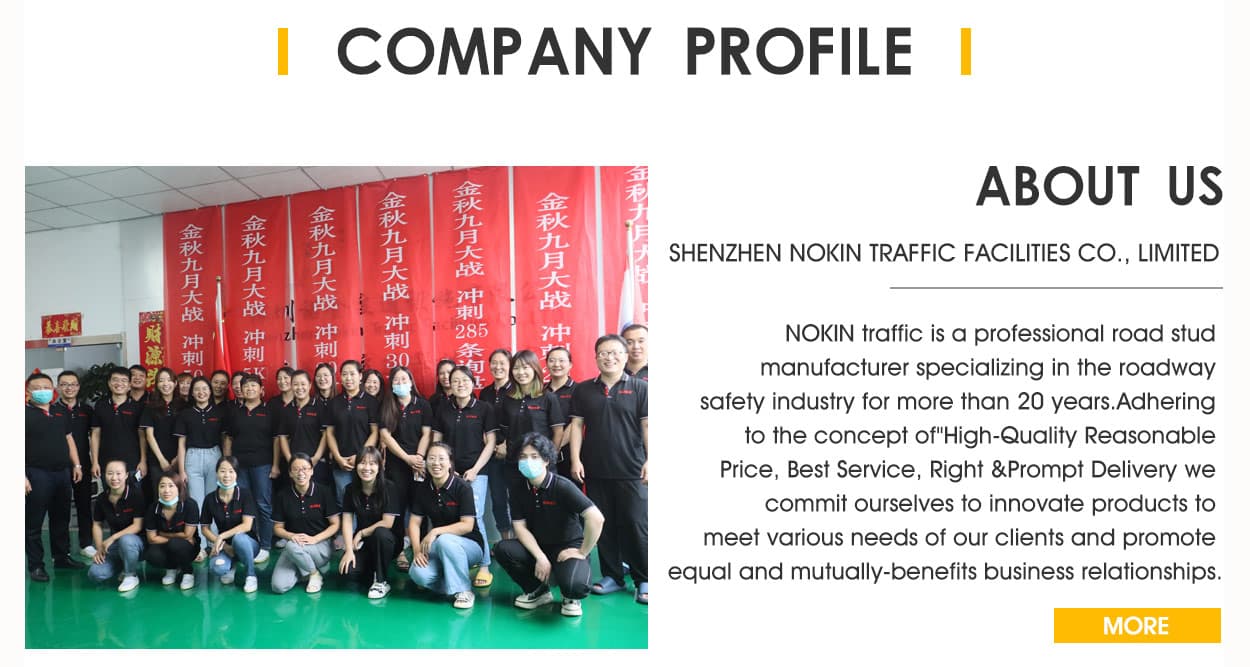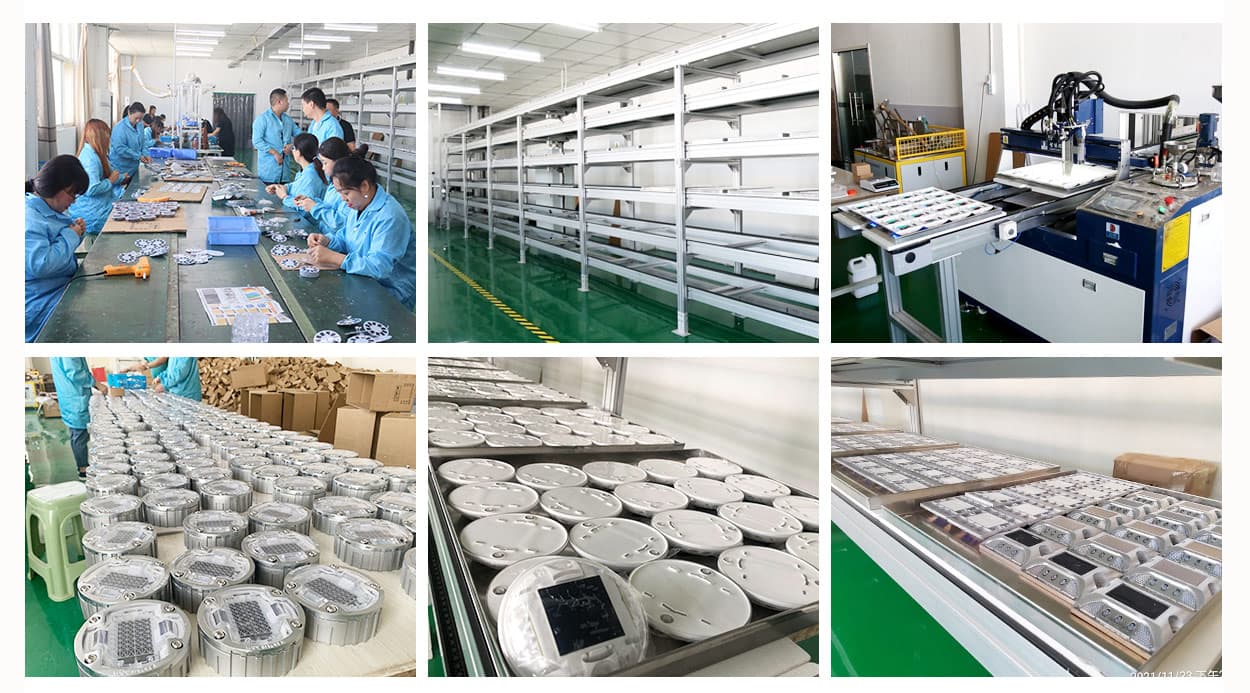


.jpg)
Ease of installation of road safety solutions was a key concern for timely construction of 61km of roads. NOKIN Road Studs proved to be easy to work with, resulting in the M3 opening ahead of schedule. The product is also engineered for durability and cost-effectiveness. Download the full case study:
.jpg)
NOKIN is dedicated to improving traffic safety and mobility on a global level—for every driver. Every vehicle. Every road. Our mission is to make sure families, commuters, pedestrians and road workers all get home safely. That’s why we’re pursuing a future of zero deaths on the road. To reach this goal, we continually work
.jpg)
These road studs are made by NOKIN and are the most commonly seen on the UK road network. They are specially designed for long-term temporary installations or permanent installations. The 290 Road Stud or Cats Eye as it is commonly known is available with a white body or yellow body, which you can choose from above.
.jpg)
NOKIN road studs Designed for application on asphalt and concrete road surfaces, these road studs provide highly effective, long-life visibility, particularly at night and in wet weather. Stud can paste with apoxy on road or can be mounted with nail also.
.jpg)
Road studs in like manner called as Cat Eyes, NOKIN Road Studs, NOKIN Cat Eyes, Solar Road Studs, Plastic Road Stud, ABS Road Stud, Aluminum Road Stud, Solar cat eyes, and daylight based road stud with shank, Road Studs with Shank, Road Studs without Shank. Plastic Road Studs are indisputable from long partitions.
.jpg)
Road studs provide most effective night guidance even under the most adverse weather conditions. The result is a marker that demonstrates high-impact strength and holds up longer on today's heavily trafficked roads and motorways.
.jpg)
NOKIN is on a mission to reduce fatalities on highways, city streets and intersections, and in construction zones. We are working toward zero deaths with innovations like wet reflective pavement markings and more visible road signs.

Like their temporary equivalent, they are used on roads and motorways: The NOKIN 290 stud is a high performance, permanent, surface mounted, reflecting road stud. NOKIN has combined innovative technologies, including advanced optical design, hard ceramer coatings and computer-aided construction design, to produce a highly reflective, long-lasting road stud which has proven itself in many countries throughout the world.
.jpg)
Feb 09, 2019 · Reflective Road Stud "Śnieżka"-1 Installing NOKIN Two-way Yellow White Road Studs Reflector Raised Pavement ... Revision tips, what apps and books to use, motorway studs, hand signals ...
.jpg)
1.White reflective road studs mark the middle of the driveway or road. 2.Red mark the left edge of the road, indicating no traffic. 3.Amber reflective road studs mark the central reserve of a two-lane or highway. 4.Green color road stud mark the laying and branching at the edge of the main lane and the
.jpg)
The most common coloured road studs are: White studs; White studs are used to denote lanes on motorways, as well as the dashed centre lines on single carriageways. They are perhaps the most common and visible form of road stud. Red studs; Red studs mark any line which should not be crossed by a vehicle.
.jpg)
PassTheory.co.uk is a privately owned theory test booking and educational service. We are not affiliated or associated with the Driving and Vehicle Standards Agency (DVSA) or any other government agency.
.jpg)
motorway studs indicate where a junction either joins or leaves a motorway, often called a motorway slip road. White. motorway studs are placed between the lanes of dual carriageways or motorways. Blue. motorway studs can occasionally be seen and are for the use of the emergency services. Motorways and the theory test
.jpg)
As well as milled road studs, we’ve also worked on numerous projects with surface mounted reflective road studs, including NOKIN 290 and Stimsonite 980 road studs. We also frequently provide pedestrian metal studs, which are non-reflective studs used to delineate pedestrian areas such as paths and walkways.
.jpg)
Amber reflective studs are common on UK motorways. Rule 132 of the UK highway code relates to the use of reflective road studs with white lines and states that:. Amber studs mark the central reservation of a dual carriageway or motorway.